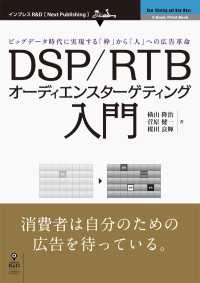基本説明
Provides a rich theoretical discussion of work in coversation analysis and speech act theory dealing with moves in disputes, offering a sophisticated review of a literature which has largely concentrated on adults to date and revealing how it relates to children's culture.
Full Description
How do children get their own way in arguments? What is the most effective way of pursuing one's own goals in preschool? 'Use your words' is an instruction frequently heard in nurseries and pre-schools encouraging young children to resolve the situation through verbal rather than physical means. Discourse is seen as the solution, yet, what words are the children supposed to use, and how do they go about resolving disputes? This fascinating book offers a conversation analysis of children's arguments, revealing disputing as a highly ordered, rule-governed activity, even amongst very young children. The author provides a rich theoretical discussion of the work in speech acts and conversational analysis, whilst offering a sophisticated review in relation to children's culture. It will be of great interest to conversation analysts within sociology and linguistics, as well as to educationalists and scholars of childhood.
Contents
Chapter 1 Introduction; Chapter 2 Defining Child Conflict; Chapter 3 Conversation Analysis; Chapter 4 Peer Disputes; Chapter 5 Dispute Outcomes; Chapter 6 Preference and Dispute Outcomes; Chapter 7 How to Resolve Disputes;








